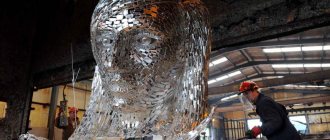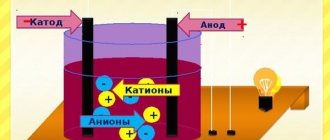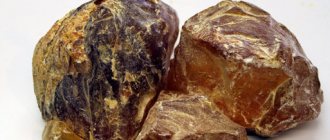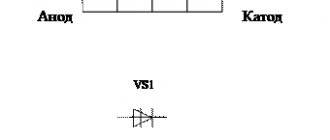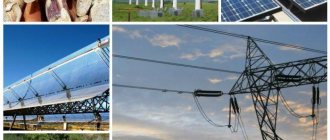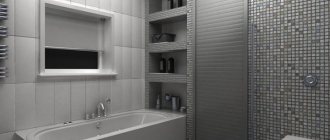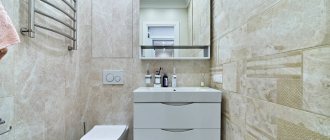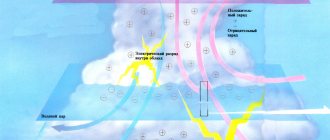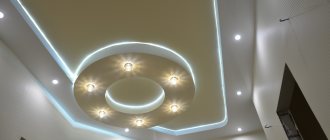Areas of application of electrical insulators
What is electrical resistance
To find out where electrical insulators are used, just remember where electrical wiring is common. These can be both domestic power supply and electric lighting systems, and industrial ones. Electrical power cables laid outdoors and underground contain several layers of such insulation. In instrument making, individual design elements of devices also have to be isolated from voltage. These can be either small elements of different boards or entire units. Such insulation allows you to maintain the performance characteristics of materials located near current-carrying conductors.
Insulation of underground gas pipelines
The main destructive factors affecting underground pipes are salts, moisture dissolved in the soil and so-called “stray currents”. All these soil components cause premature corrosion of the metal, which disrupts the structure of the gas pipeline and leads to malfunctions, reduced efficiency, and failure of systems.
Sources of stray currents are railways and highways, underground power cables and other energy facilities. This phenomenon wears out the walls of gas pipes, in some cases rendering them unusable within 1-2 years of operation. This leads to serious consequences, including accidents and gas leaks. Therefore, the insulating material for underground communications must have dielectric properties (in addition to waterproofing, thermal protection and others). The optimal solution is a polyurethane foam coating, which is installed in a factory at the pipe production stage or during their operation as part of a major overhaul.
Application of protection in the factory is considered more reliable. The manufacturer provides complete surface coverage, which means complete protection. In addition, in production conditions, special monitoring sensors can be installed in pipes. Electronic devices operate uninterruptedly, detect malfunctions in the system and allow them to be quickly eliminated.
Installation of polypropylene insulation at the factory is fully automated, which minimizes errors. The process begins with pipe preparation: drying, cleaning and polishing. Then the structures are heated, an adhesive base is applied to the hot surface, and then a polyethylene layer is applied. Using a fluoroplastic roller, the top layer is leveled and compacted. The last stage of production is cooling, followed by quality control of the manufactured products.
PPU insulation has the following advantages:
- low thermal conductivity;
- lightness and minimal density - does not increase the volume of pipes, does not create unnecessary load;
- ease of installation during repairs;
- resistance to fluctuations in pressure and temperature;
- dielectric properties - prevents the destruction of metal by stray currents;
- resistance to aggressive environments, chemical components of soil, moisture.
To enhance the waterproofing properties, the PPU coating is additionally wrapped in polyethylene film. The strength and durability of pipes with polyurethane foam protection are combined with affordable prices, which explains the demand and leading position of the structures in the construction market.
Positive properties of epoxy insulation
Pipes with epoxy insulation on the inner surface differ from simple metal pipes in that they have a continuous polymer layer of protection. Manufacturers guarantee uninterrupted operation of pipelines for many decades at temperatures ranging from minus thirty-five degrees to plus one hundred and eighty degrees.
Epoxy powder coating protects pipes from corrosion and erosion processes, prevents cathodic disbonding, abrasive wear, and the pipes are also resistant to aggressive substances.
Attention! Epoxy coating meets the requirements specified in government and industry documentation, practically at the same level as pipes coated with polyethylene insulation. The main advantage is considered to be a high level of wear resistance
The increased quality of rolled pipes makes it possible to install products in microtunnels, under highways, in underwater pipelines, when laying pipes at an angle in wells
The main advantage is considered to be a high level of wear resistance. The increased quality of rolled pipes makes it possible to install products in microtunnels, under highways, in underwater pipelines, and when laying pipes at an angle in wells.
Types of factory-made epoxy insulation
There are several types of coatings using epoxy powder:
1.single-layer insulation type.
2.type of double-layer insulation.
3.type of three-layer insulation, in this case an epoxy-polyolefin coating is used.
Attention! The use of one type of coating is determined by the purpose of the future pipeline, its operating conditions, the properties of the transported liquid, the size of the pipes, and also take into account economic factors. How to apply epoxy insulation to the inside of a pipe
How to apply epoxy insulation to the inside of a pipe.
The thickness of the protective layer must be more than 150 microns.
The maximum temperature during operation should be one hundred and fifty degrees, and the permissible diameter of pipe rolls is 57 - 1420 millimeters.
5.testing of products for compliance with the required indicators; pipes are tested for resistance to negative factors. After passing all levels of verification, the products are put on sale.
Characteristics of electrical insulators
All electrical insulators without exception are subject to general requirements.
Electric strength
Methods of fire protection of electrical communications
The main task of the dielectric is to provide the required level of the electrical breakdown strength value. This value is directly dependent on how thick the porcelain wall of the insulator is. Strength failure occurs when a solid dielectric breaks down or as a result of a discharge along the surface of an insulator. Strength is characterized by the industrial frequency voltage that the insulator can withstand on a dry and wet surface, as well as by the pulse voltage during testing. This value is checked with a special device - a megohmmeter.
Resistivity
The insulating material allows a small portion of the electrical current to pass through. This value is disproportionately small in comparison with the currents that constantly flow through the veins. Electric current can flow through two paths: through the insulating material itself or along its surface. Specific resistance is the value of resistance per unit volume of a material. It is equal to the ratio of the products of the resistance values of the current flowing through the insulator and through it to their sum.
As a unit of measurement for this quantity, we took the resistance value of an insulating material made in the shape of a cube with a side of 1 cm, where the direction of the current coincides with the direction vector of the two outer opposite faces. The value of resistivity depends on the state of aggregation of the material and other important quantities.
The dielectric constant
After placing the insulator in an electromagnetic field, the direction in space of particles with positive charges changes: they line up along the lines of force of the electromagnetic field. The electron shells change their orientation in the opposite direction. The molecules become polarized. When dielectrics are polarized, molecules form their own field, which acts in the direction opposite to the direction of the general field. This ability is determined by the dielectric constant.
Important! Dielectric constant characterizes the degree of polarization of the dielectric. It affects the capacitance of elements such as capacitors
In their manufacture, insulation with a high dielectric constant should be used. The value is measured in farads per linear meter (F/m). The unit of measurement got its name in honor of the great English scientist Michael Faraday, who made a significant contribution to science in the field of electromagnetism.
Dielectric loss angle
Dielectric loss is the electric field energy dissipated in an insulating material over a certain unit of time. Energy does not disappear anywhere, but moves from one state to another (heat). The higher the loss, the greater the risk of thermal destruction of the dielectric. This characteristic of an electrically insulating material is measured by the dielectric loss tangent. The dependence of the tangent of the angle on the value of dielectric losses is linear.
Properties of dielectrics
Electrical insulating materials must have certain properties in order to perform their functions. The main difference between dielectrics and conductors is the large volumetric resistivity (109–1020 ohm cm). The electrical conductivity of conductors is 15 times greater compared to dielectrics. This is due to the fact that insulators by their nature have several times fewer free ions and electrons, which ensure the conductivity of the material. But when the material is heated, there are more of them, which helps to increase current conductivity.
There are active and passive properties of dielectrics. Passive properties are the most important for insulating materials. The dielectric constant of the material should be as small as possible. This allows the insulator not to introduce stray capacitances into the circuit. For a material that is used as a capacitor dielectric, the dielectric constant should, on the contrary, be as large as possible.
Waterproofing materials
Classification of waterproofing by groups.
Moisture-resistant materials are most often used to protect buildings from the adverse effects of precipitation, natural influences and various chemicals that corrode the structure of building materials.
Moisture-proofing structures are divided into many types and subtypes, which are usually determined by purpose of application:
- aimed at filtration;
- providing sealing;
- preventing corrosion;
by types of building materials:
- asphalt mixtures, paints, varnish solutions, emulsions, low and high temperature asphalts;
- mineral-based mixtures (cement, bulk solutions);
- plastic-based mixtures in painting works (painting, finishing, gluing, putty, varnishing, screed);
- metal-based solution (brass, copper, lead, aluminum materials).
In addition to the above varieties, moisture-resistant insulating materials are divided into 2 categories: surface and penetrating. The first category includes adhesive and coating polymer mixtures, the second - those based on mineral raw materials.
Roof vapor barrier diagram.
The main disadvantage of surface waterproofing materials is the high probability of detachment from the surface to which they were applied. This leads to further loss of protective properties. However, to work with surface mixtures, it is necessary to carefully treat the exterior and follow the rules for applying the material.
The best option is penetrating waterproofing. It contains mineral additives such as quartz sand, cement and natural chemicals. They provide high-quality and durable surface protection from external influences.
Moisture resistance of the coating is achieved by penetration of the waterproofing material into microcracks, pores and free areas of the surface with further strengthening of their structure. This effect is obtained due to the reaction of natural chemicals, cement and moisture. The penetrating material merges with the structure of the surface being treated upon contact with water. This process ensures durability of the surface without impeding its vapor permeability.
Types of insulating materials
It was already mentioned above what types of insulation for cables and wires currently exist. Now about them in more detail.
Paper
In modern conditions, such insulating material is rarely used. But if it is decided to use it in power cables, then the paper is pre-treated with a special liquid, which is a mixture of wax, rosin and oil. The disadvantages of such insulation are very significant, because paper is not able to cope with external influences. Thus, wires with this type of insulation are very rare. Yes, and they can only be used in dry rooms.
Polyvinyl chloride
PVC is quite in demand in the modern market. There are several advantages of this material:
- High level of elasticity;
- Low cost;
- Excellent protective qualities;
- Resistant to temperature changes.
But there are also a couple of small disadvantages. Over time, like any other material, polyvinyl chloride loses its positive qualities. At the same time, its chemical stability gradually decreases.
Rubber
To create insulation, the manufacturer can use natural or artificial rubber. The main advantage of this material is that it gives the wire excellent flexibility. And this allows you to use it in any conditions. But such an insulating material is not considered durable, since the braiding loses its qualities over time.
Soundproofing material
The use of soundproofing seals in the construction of buildings for various purposes aims to reduce the level of penetrating noise and extraneous sounds.
Insulating materials of this type are divided into 2 groups:
Sound insulation scheme.
- sound-absorbing or acoustic;
- gaskets
Acoustic cladding products are used in the construction of industrial enterprises, installation of ventilation units and industrial air conditioners to ensure standard noise levels. And in public buildings they create an optimal level of audibility and improve acoustics in large rooms where many listeners are located: auditoriums of cinemas and philharmonic societies, theaters, and recording studios. The soundproofing properties of protective equipment depend on the porosity of the sealant.
Soft, semi-rigid and hard linings can be used as insulating materials that absorb noise.
To obtain a soft type of cladding, mineral wool and fiberglass are used. Soft soundproofing cladding is available in the form of mats and rolls. The volumetric mass of this type of material is about 70 kg/m³. On one side they have a sheet perforated screen. The material for it is aluminum, rigid polyvinyl chloride or asbestos cement.
Semi-rigid absorbing soundproofing cladding is made in the form of mineral wool and fiberglass slabs. The size of one slab is 50×50×2 cm, its volumetric mass is 80-130 kg/m³. Wood fiber boards and plastics with a porous base are also used for these purposes. These include polyurethane foam and polystyrene foam.
In the production of solid insulating materials, granular or suspended types of mineral wool and a colloidal binder are used. Starch paste is used as a binder. The slabs are painted and produced with different types of texture, their volumetric weight is about 400 kg/m³.
Padding soundproofing materials prevent noise from entering from the outside and do not allow sounds to travel further. This type of cladding is produced in rolls and slabs. For their manufacture, fiberglass and mineral wool, gas-filled plastics are used.
Heat resistance classes of electrical insulating materials
The heat resistance class of dielectrics is indicated by a letter of the Latin alphabet. We list the main ones:
Cable insulation and materials for it.
Rubber-based insulating materials used in cable production can be of either natural or synthetic origin. Sufficiently high flexibility is an important advantage of rubber insulation of cables and wiring, which allows installation of networks in any conditions. However, this type of insulation also has a drawback: the rubber insulating braid over time undergoes a change in the chemical properties of the material and loses its protective properties, which negatively affects the reliability of the insulating layer.
The cable insulation made of low or high density polyethylene is characterized by a high degree of resistance to chemical or other aggressive environments. Conventional types of polyethylene insulation are unstable when heated, but vulcanized polyethylene is not afraid of temperature changes, so it is recommended to use it in conditions of elevated temperatures.
PVC-based cable insulation materials are polymer derivatives that have all their advantages and disadvantages. PVC insulation is cheaper for manufacturers than any other types of insulating materials, but the braiding of a cable or wire somewhat loses its protective properties and the chemical resistance of the material decreases when plasticizers are added. At the same time, cable insulation based on PVC materials is highly elastic, and by selecting the right additives, you can give it additional properties such as heat resistance and maintaining elasticity under low-temperature conditions.
With the abundance of modern materials, paper-based cable insulation today is used quite limitedly. For this type of wiring, the permissible voltage is no more than 35 kV. If paper insulation is used in the production of power cables, then the paper base must be impregnated with a special composition, which includes oil, rosin and wax. As a result of these activities, the paper acquires characteristics unusual for it. But the instability of paper to any external influences is a huge disadvantage of this type of insulation.
Types of pipeline insulation
Normal and enhanced types of insulation are practiced. The last to be exposed are pipes that are laid in soil with a high content of chemicals. Provided that the pipe diameter is more than 1 m. Bitumen and polymer materials, glass and varnish coatings, and others are used for insulation.
Due to the need to keep your home warm and keep communications intact for as long as possible, there is increasingly a need to use insulating materials. Thanks to the wide range, you can easily select everything you need, according to your requirements and financial capabilities. Do not hesitate to check with the seller all the information you are interested in.
Floor waterproofing device
High-quality waterproofing helps to protect not only floor structural elements, but also extend the life of floor coverings.
This type of insulation is used to protect the concrete base and prevent rotting of wooden and other materials that were used in the construction of the house. High humidity has a detrimental effect not only on the materials used in finishing the premises, but even on the structural elements of the building itself, rendering them unsuitable for further use. High-quality waterproofing of the base allows you to avoid these problems.
When purchasing material for waterproofing, you need to focus on the selected technology:
- Coating insulation of the floor is carried out using epoxy resins, synthetic or bitumen mastics.
- Rolled (covered) waterproofing involves the use of roofing felt, roofing felt and other materials with good performance characteristics.
Whatever type of waterproofing you choose, the sequence of work will be the same for everyone:
- preparation of the base;
- laying insulating material;
- waterproofing seal.
If during the construction of a house you want to insulate the entire room, then the best option would be to use lining materials. If work is carried out only on the floor, then it would be better to use the coating option.
Pasted waterproofing is easier to use than coating waterproofing; moreover, it is quite durable and creates additional sound insulation.
To create coating insulation, mastics are used: bitumen-rubber or bitumen-polymer. They contain oxidized bitumen combined with an organic solvent and filler (crumb rubber, plasticizer, latex). The mastic can be applied without special preparatory work; it has good adhesion. Waterproofing of this type can be done with minimal time and effort.
You need to start applying mastic from the wall opposite the door. In this case, the material is leveled with a spatula or a wide brush. All materials for this type of insulation contain instructions on the packaging, which indicate the application method, the required number of layers and complete drying time.
Materials for adhesive waterproofing are sold in rolls. They include a bitumen base, polymers, reinforcing fiberglass and polyester. Among the main advantages of this insulation it is worth highlighting the following:
- ease of installation;
- the ability to use the floor immediately after pasting;
- high strength;
- additional sound insulation.
Flaws:
- careful preparation of the base is required;
- During the work, an unpleasant smell of bitumen appears;
- when laying it, the floor height due to the screed increases by 50 mm or more.
Floor soundproofing device
To prevent noise from being transmitted to other rooms, it is best to soundproof the floor in absolutely all used rooms.
One of the main sources of stress is noise. Therefore, when making major renovations in an apartment, it is necessary to take care of creating high-quality sound insulation of the floor. The very design of multi-storey buildings requires a certain level of sound insulation. But in some cases this property should be significantly enhanced with additional materials.
The process of soundproofing a floor begins with sealing all kinds of holes and cracks. After this, the floor is thickened with various materials. Of course, this should not be done by significantly reducing the height of the room. It is also worth considering that a strong increase in the weight of the base can lead to damage to the foundation.
Among solid materials that prevent the penetration of sounds, the most popular are: gypsum fiber, drywall, fiberboard. Among the soft materials, stone wool or fiberglass should be highlighted, with the help of which you can extinguish the sound waves that managed to penetrate inside.
Creating high-quality floor insulation is not that difficult. The main thing is to use high-quality tools and materials, as well as know the technology for carrying out the work.
Plastic insulation
The cores are covered with plastic insulation using extrusion. This is more technologically advanced than rolling paper, and then soaking and drying. Plastic insulation is better than oil-impregnated paper insulation in all respects:
Control cable with plastic insulation (KVBBShv)
- greater cable capacity due to an increase in the long-term permissible temperature of the core,
— high thermal stability current during short circuit,
- less weight and diameter,
— you can lay the cable in the cold without preheating,
— there are no restrictions on the difference in levels on the track (nothing will flow anywhere),
— installation is easier due to the absence of liquid components.
There are four types of plastic insulation.
PVC plastic compound
A mixture of polyvinyl chloride resin with plasticizers and stabilizers. Plasticizers with added antioxidants make the insulation flexible and slow down the degradation of electrical resistivity.
Power cable VVG ng with PVC insulation
PVC is not the best insulator, but it is resistant to aggressive environments. Does not support combustion, but burns. Begins to decompose at 140° C and releases toxic gas hydrogen chloride. The properties of PVC deteriorate from light, and pigment additives do not completely help.
PVC compound is the most popular type of plastic cable insulation.
Cross-linked polyethylene (XPE)
The properties are approximately the same as PVC plastic. XLPE insulation is used only on single-core and three-core cables. The advantage of XLPE over PVC: smaller dielectric thickness with equal operating voltage on the line.
PvV - power cable with cross-linked polyethylene insulation
When using XLPE, two semiconductor layers are included in the cable design: along the core and along the insulation. This is necessary to equalize the electric field strength and electromagnetic compatibility of the cable with external electrical circuits.
XLPE cross-linked polyethylene differs from conventional thermoplastic PE by maintaining mechanical and electrical properties when approaching the melting point. Reason: cross-linking of polymer threads at the molecular level using reagents or radiation. It's like making heat shrink tubing, but without the blowing.
End and connecting cable sleeves
for cables with PVC insulation, cross-linked polyethylene and oil-impregnated paper. Go to catalog
Rubber
It is distinguished by increased flexibility, moisture protection and cost, and is made from rubber. Rubber-insulated power cables connect moving elements to the electrical network.
The rubber insulated cable has an excess diameter due to its rounded shape. Rubber is afraid of light and loses its elasticity over time.
KG-T power cables with rubber insulation
In addition to rubber, there is silicone rubber: in addition to flexibility, it has increased heat resistance.
Fluoroplastic
The strongest dielectric, resistant to high temperatures and aggressive environments. PTFE insulation is very expensive, so it is used either in harsh operating conditions or for high-voltage heating cables.
With equal dimensions, cables in fluoroplastic insulation transmit more power than cables in XLPE insulation, not to mention PVC.
Read with this
- Insulation of the floor in a bathhouse on screw piles
- Penoplex for floors
- Pipes in PPM insulation
- What is the best tile adhesive for underfloor heating?
- How to make a wooden floor in a private house with your own hands - instructions
- How to insulate a chimney pipe in the ceiling and not make mistakes?
- Technologies for waterproofing wooden floors and additional impregnations
- How to choose insulation for laminate flooring
- Warm water floor under tiles
- Do-it-yourself insulation of a sauna from the inside using different materials
